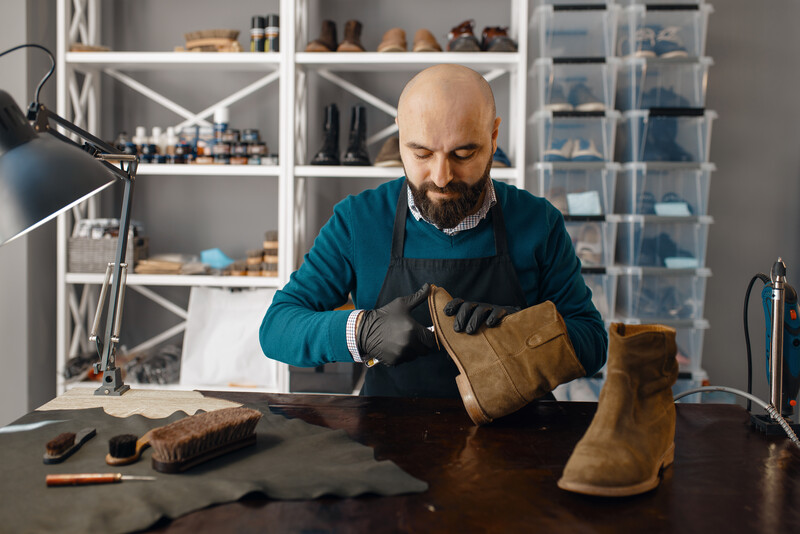Sheepskin, suede, nubuck, cowhide, chamois—no matter what leather your boots are made out of, chances are they feel like a second skin on your foot. But a worn-in sole can do just the opposite, giving you clunky uneven strides and just making you look less cool.
So is it worth it to resole your favourite pair of boots?
What it is: When you take your boots to a cobbler for a re-soleing, they start by separating the leather upper from the sole. Then the upper is cleaned and prepared for a new welt (a strip of leather) and a new sole, and then the new sole and boot are stitched together.
- You’re essentially getting a new footbed meaning you’ll have that worn for the first time bounce in your step without having to break in the leather again. Read more about the process in detail here.
What you’ll pay: Prices vary depending on the brand of boot, quality of craftsmanship and the experience of the cobbler, but Canadian shoe restoration company Vince DeVito has a price list online, that shows resoles can range from $175 to $225.
What you’ll save: The price it would cost to replace your old ones, especially if they are special edition or hard to find (and the pain of breaking them in).
- I have a pair of Blundstones in a colour they don’t make anymore, so getting them resoled is my only option if I want to keep wearing them, which I do (I never have trouble figuring out which boots are mine at a party).
So, is it worth it? If you’ve taken good care of the leather, it is definitely worth it! Not just because you’re cutting down your consumption and potentially supporting a small business, but because that’s what quality made boots are designed for. So if you shelled out a few hundred bucks for some calfskin boots, re-soleing is the best way to keep them stylish for years to come.
- But if the leather is cracked, unconditioned and generally in disrepair, invest in something new—and learn how to treat them properly.
